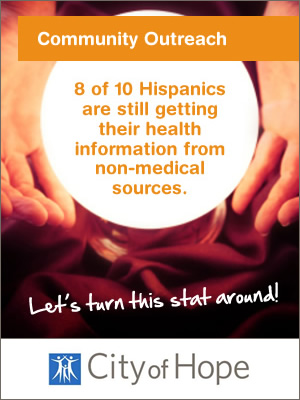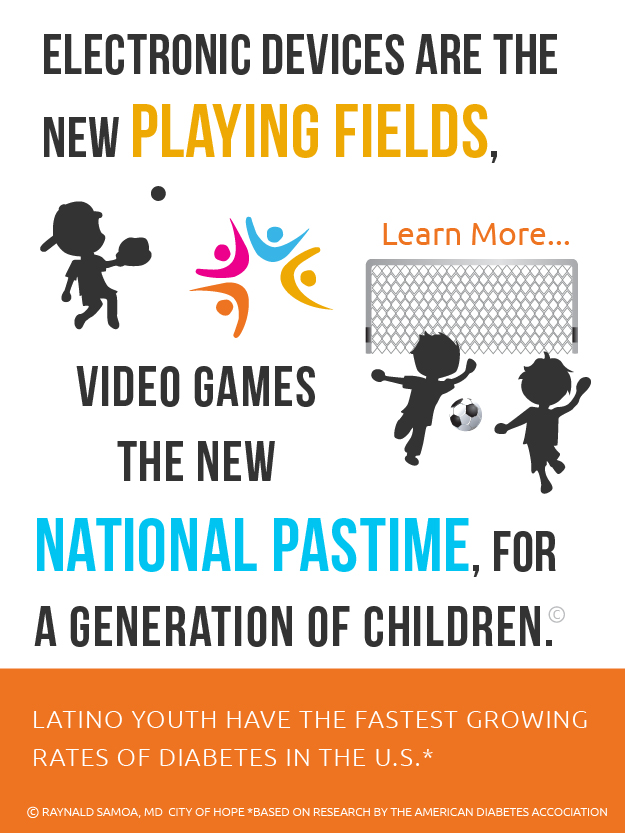
New PwC Report Validates Significant Opportunity Hispanics Represent for Healthcare Industry
07/01/2014 09:48PM | 10387 viewsIf you want to see what role technology will play in the future of healthcare, look no further than the Hispanic market. This is where the U.S. demographic shift meets the great technological shift. Hispanics not only represent future growth and innovation for the healthcare industry, they’re outpacing the rest of the country as early adopters of new technology and changing the very way that healthcare is being accessed. From smartphones and social media to their local pharmacist and retail outlets, Hispanics are skipping the doctor and getting their medical advice elsewhere – hoping to save themselves and their families big money in the process.
This is one of the findings of a new report by PwC called, Hispanics: A growing force in the New Health Economy. Hispanics represent a huge market for the healthcare industry, and those who fail to wake up to this opportunity are at risk of never catching up. The industry must take a good hard look at how it is delivering services today and how it must change its business model to better engage the community and become trusted providers and partners in care. Those who take a leadership position in this endeavor will find unprecedented growth opportunities and entrenched brand loyalty once they have established an authentic foothold within the community.
Editor-in-chief Marisa Salcines recently spoke with Frank Lemmon, principal for PwC U.S. health industries, about his views on the state of healthcare today, and what the new report means for the industry as it moves forward with its efforts to reach the ever-expanding Hispanic market. Mr. Lemmon performs strategy and operations consulting for large healthcare providers, insurance companies and pharmaceuticals, and as an Argentine American, also enables clients to develop Hispanic focused products and services by helping them see through the Hispanic lens.
Marisa Salcines: The report is very interesting and validates a lot of our own research and firsthand experience. To give our readers a little background before we discuss it, how did the healthcare industry get to the tipping point it’s at today?
Frank Lemmon: The genesis of where we are today goes back to the turn of the last century. This is when you see the first competition for labor. Wage-earners were unionizing and employers started competing for labor and talent by offering benefits on top of wages – and those benefits included healthcare.
Along with the advancements in medicine and technology that grew over the last century, healthcare developed into a fee for service market, whereby the doctor gets paid for performing this or that procedure, for example. Then in the mid to late 80s, employers needed a way to control their escalating healthcare costs, and that’s when the concept of managed care took off as a way to help manage everything from healthcare expenditures to insurance premiums.
This turned healthcare into the nation’s largest cottage industry[MJO1] , with insurers trying to aggregate populations in large numbers in order to distribute risk and manage costs. But healthcare continued to be delivered locally, and there was a growing misalignment of incentives and distribution mechanisms for services between physicians and hospitals and insurance companies.
Fast forward to today and the Affordable Care Act, which is really insurance reform more than anything else, in an effort to provide universal healthcare access to a broader population.
Marisa: Your report focuses on the Hispanic population. Why are they so important to the future of healthcare, and how do you see them influencing it?
Frank: The report highlights the massive buying power of the Hispanic community. Not only the 10 million that have now become part of the formal healthcare system through the ACA, but the 57 million Hispanics across the United States, representing 17% of the population – and as the fastest growing demographic, close to one-third of the population by 2050.
This is a huge opportunity to reap tremendous benefits for those who can engage and activate this group to participate in the healthcare system. As we looked at efforts to date to target the Hispanic community, this is a group that has really been underserved. You can find some companies doing a good job, in retail and mobile for example – and not to say there aren’t some in healthcare, too – but they are the exceptions.
Marisa: In your view, what must healthcare organizations do to reach and speak to Hispanics?
Frank: First and foremost, you’ve got to realize that Hispanics are not a monolithic group. There are cultural differences and other unique qualities whether you’re talking about Central Americans vs. South Americans, Cuban Americans vs. Argentine Americans, and so on. Each one of these groups will have different ways in which they value and access the healthcare system, depending on their country of origin, their acculturation level, their geographic location, and other factors.
Our survey and focus groups also showed some commonalities. For example, Hispanics are a cost conscious group. They still want quality, but their definition of quality might be different from the general population, and what’s ultimately most important is the perceived value you’re creating for them as consumers.
Also, if you really want to connect with Hispanics, you have to think in terms of mobile technology. You’re not going to find the vast majority sitting down at a PC when they go online. Mobile is how they access the Internet, and that’s how you’re going to reach them.
In fact, Hispanics show high interest in accessing healthcare in other non-traditional settings, too. They are 11% more likely to access their healthcare and information from a pharmacist or retail clinic than non-Hispanics are.
This is significant because in their countries of origin there are pharmacies everywhere. You can go to a pharmacist and get what you need very quickly while you’re out doing your other errands. You don’t have to wait and schedule an appointment, make a special trip, perhaps going out of your way taking public transportation, while missing a day of work and a day’s pay – all for a service you don’t really perceive as valuable.
Marisa: As we continue to hear about the rising numbers of Hispanics in the country – along with their increased purchasing power – why is healthcare so slow to respond to this changing demographic?
Frank: For a couple of reasons. First is that healthcare is not what you would call a leader in consumerism. The industry generally ranks very low in customer satisfaction and trust – especially insurers who are comparable to the cable companies when it comes to satisfaction levels. But there are issues with clinicians and physicians too, everything from pricing to treatment in the doctor’s office, though a lot of the negative consumer rating has just as much to do with front office staff interactions.
The other reason is where the investment dollars go in healthcare. Customer-centric industries like retail and automotive invest heavily in R&D and marketing to their customers, but in healthcare this is limited. Targeting a particular group requires work and is very labor intensive, so it’s difficult to do when everyone is vying for those limited dollars.
By comparison, look at the food & beverage industry. You’ll see a beer company going into the Hispanic community, attending events, sponsoring a Tejano band, and offering promotions specific to this consumer group. They get a huge uptick in sales because they are authentic and supportive of the community in their own backyard.
It’s difficult to do on a large scale, but not if you start looking at the Hispanic community in terms of micro markets – and reach out to them locally where they reside, where they interact, work and socialize. Find out where the community leaders are, those of influence. The key to success is authenticity and visibility and trust, and once gained you’ll find it’s a community that will reward you with significant brand loyalty.
Marisa: We often see those who think it’s simply a matter of translating their existing material from English into Spanish – and then giving up when that doesn’t work. What would you say to them?
Frank: If all you are doing is translating existing material, this is not the same as authentically speaking to the Hispanic community or looking at things from their vantage point.
About 75% of the Hispanic population speaks Spanish at home and about a third of those are not fluent in English. They come from different countries of origin and words translate differently. So you can’t do a single translation that’s going to come across as textbook Spanish. It’s not going to feel authentic, and right off the bat you’re failing to build credibility and trust. Even more, the information is going to seem watered down and not comprehensive; they’re not going to act on something that lacks details and doesn’t offer them the full picture for making decisions.
Marisa: Can you give an example of how this might be perceived in the Hispanic community – how it might trigger a natural skepticism?
Frank: I remember working with a client many years ago when they came out with what they considered a “Latino” version of their product. They understood that price was king and so it was a lower price point, but they marketed it in such a way that it came across as a second tier product of sub-standard quality.
It’s interesting because in countries of origin, it’s not unusual to have two prices, but it’s one price for paying with cash and another for paying by credit. So you have to understand how it ties in culturally to understand the perceived value of having two different prices.
Marisa: So how can those in healthcare create more value for the Hispanic consumer?
Frank: One way is better access that takes into account the broader issues in their life and enables them to keep meeting family obligations and personal objectives. As I mentioned, many people can’t afford to miss a day of work, so you have to look at new and innovative solutions – such as remote monitoring to collect information – which also takes advantage of Hispanics as leading users of technology.
Using the latest technology is key to attracting new Hispanic patients and more valuable than anything you can do marketing-wise to get them to make an appointment and come into the physician’s office. Though that’s important too, they’re less likely to do this than try out new technology that can track and share their information – especially when they are sharing that information with those who first earn their trust.
Marisa: What do you think needs to be done in terms of leadership within the industry – especially when you consider that only 5% of doctors in the U.S. are of Hispanic origin?
Frank: Organizations that want to be leaders in the Hispanic market need to better understand the subsegments of the Hispanic population and they need to do that by geography and micro markets. If you want to reach Hispanics in Texas, for example, do you know the regional differences between the community in border towns, central, and northern Texas? What is the breakdown in terms of age groups, acculturation (versus holding on to traditional values from country of origin), how many generations in the U.S., etc. You also want to build relationships with community leaders and influencers – and in such a way that they trust you enough to partner with you as proxies to your business.
You also want to get a better understanding of how and why they access care in different locations. If they access retail and pharmacies more than traditional healthcare settings, what are the value drivers behind that? How does your business model deliver services to the population now and do you need to change it? What alternative products and services can you offer? Where can you expand the location of delivery of services to better reach out and connect? The sum of all this is: how can we engage with the consumer in such a way that makes it easier for them as they go about their daily life?
These are important first steps that will require some investment, but once you’ve earned some initial trust and made a positive impact in the local community, you can start to expand your consumer base. It will be easier to export that trust and carry your message to a wider audience once you’ve had some success in two or three micro markets that you can point to. Those that spend the time now to get to know the Hispanic community will be the most successful – and those that come late to the game will be hard pressed to take that success and loyalty away from them.











Post your Comment
Please login or sign up to comment
Comments